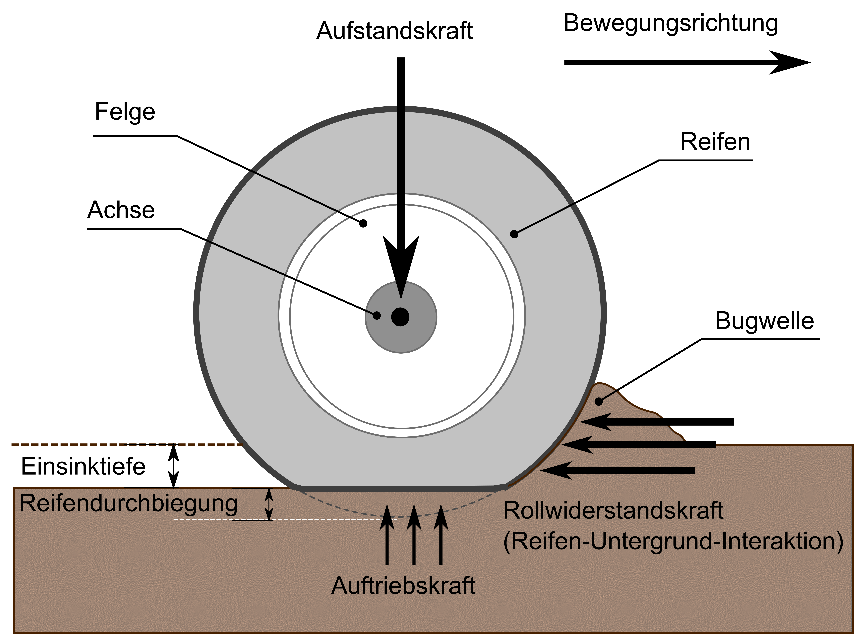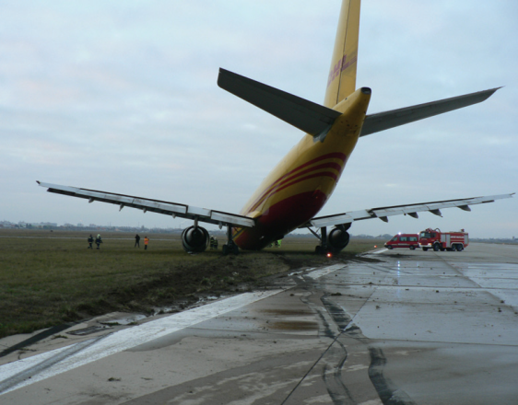T-SIT is based on a flight-mechanical model derived from empirical measurement data. It allows the determination of sinkages and rolling resistance forces of the aircraft wheel rolling at different speeds on any ground, taking into account the driving dynamics. The basis for this are relationships of terramechanics in the form of tire‑soil interaction to map the dynamic interactions (e.g. formation of a bow wave in front of the tires or buoyancy effects comparable to aquaplaning) between specific parameters of:
- Soil, e.g. soil type, soil bearing strength (CBR value), soil density etc. and
- Aircraft characteristics, including vertical contact forces, tire characteristics such as width, diameter and contact patch, and gear configuration.
The advantage of T‑SIT over quasi-static model approaches in particular is that the dynamics of the rolling aircraft can be modelled. Especially the temporarily high speeds during takeoff and landing roll (up to approx. 75 m/s) and their effect on the rolling resistance forces and sinkages can be recorded. Regarding this, the approach enables a high degree of flexibility in consideration of the above-mentioned aircraft characteristics and also offers the possibility of evaluating further requirements for RWY strips (e.g. underground structures in the area of the so-called graded portion) concerning their effects on flight operational safety.
The tool is used in the context of safety assessments to quantify the damage severity occurring during RWY excursions of aircraft with subsequent rolling of unsealed flight operation surfaces (e.g. RWY strips, RESA etc.) in the context of an accident. The focus is on material damage related to the nose gear structure. For this purpose, the rolling resistance forces determined are primarily compared with the calculated load limits (breaking strength) of the landing gear construction in order to verify if failure can be assumed.


